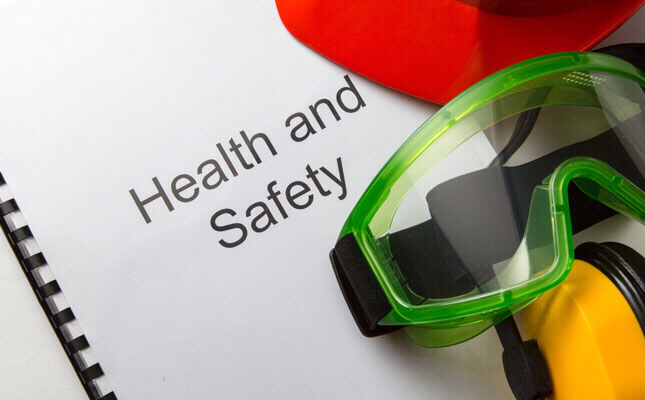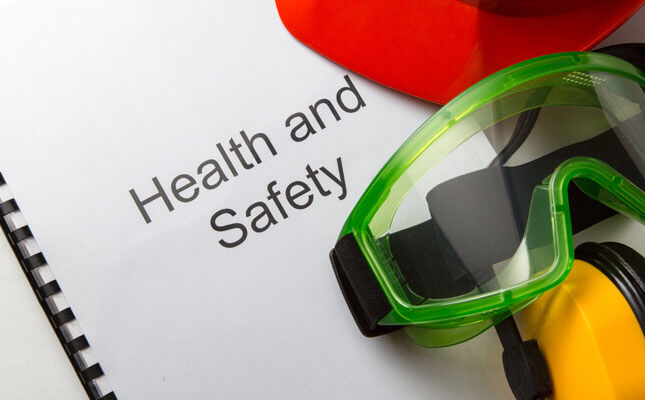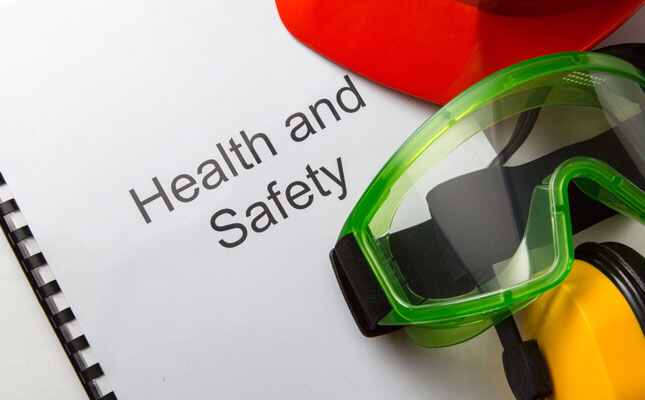Information
-
Audit Title
-
Conducted on
-
Prepared by
-
Location
-
Personnel present
Type of rooms/facilities being inspected
-
- Classrooms
- Lecture Room
- Workshop
- Office
- Store
1. Layout
-
Area is clean, tidy and well kept.
-
Adequate working space provided for each staff member (11m3 per person based on 2.5m height, desk, chair and pedestal. Consider space if other furniture is within space).
-
Floor is free of obstructions and slip resistant if appropriate.
2. Environment
-
Temperature is comfortable.
-
Lighting is adequate.
-
There is adequate ventilation.
-
Area is free from odors
3. Emergency Procedures
-
Written evacuation procedures and exits displayed
-
Are spill kits available?
-
Portable fire extinguishers have been provided and maintained.
-
There are adequate type and number of Portable fire extinguishers.
-
Escape routes and emergency doors are clear.
-
Emergency doors are serviceable.
-
Fire Doors have been inspected and state date of recent inspection.
-
Fire Wardens trained within work area (or building if small building) and name/s of Fire Wardens.
-
Procedures are in place for isolated workers. Isolated workers refer to Lone Worker Code of Practice.
-
Emergency signage is clearly visible on means of escape and entrances.
4. First Aid Facilities
-
There are appropriate first aid and emergency facilities in the near vicinity and staff and students are aware of them.
-
Kits are clearly signed, stocked and contents are in-date.
-
Monthly check sheets are used for Eye Wash bottles. State date of recent check.
-
Monthly check sheets are used for First Aid Kits. State date of recent check.
-
Monthly check sheets are used for Defibrillator. State date of recent check. State expiry date of battery and pads.
-
Names and contacts of first aiders displayed and up to date. State names of nearby First Aiders.
5. General Facilities
-
Washing / Toilet facilities are clean and functional.
-
Are stairs, passageways and store rooms well lit? (Min 300 lux for offices, 500 lux for classrooms and workshops, 200 lux for corridors).
-
General Warning and Safety signage in good condition and appropriate.
-
Isolation valves are readily accessible and clearly labelled.
-
Walls, windows, doors and furniture are in good condition.
6. Manual Handling
-
Where applicable manual handling procedures within the HS&E Code of Practice are available and being followed.
-
Trolleys are available and are being considered to transport heavy items or loads.
-
Step ladders or safe steps available to access light items stored on high shelves.
-
All manual handling task-related incidents have been adequately investigated and control measures implemented and reviewed.
-
Workers have been consulted to identify safer ways to do the job.
7. Storage
-
Materials stored in racks and shelving wherever possible are not above shoulder height.
-
Storage designed to minimise lifting problems i.e. heavy objects not stored on upper racks.
-
All shelving is labelled appropriately and organised. Labelling allows identification during inspections to report faults.
-
Shelving is inspected monthly (visual) and six monthly (detailed) and records of inspections are maintained.
-
Shelving securely fixed to the floor or wall.
8. Slips and Trips
-
Staff and students are inducted and trained in prevention of slips and trips.
-
Warning signs are available and erected near spills.
-
There are special provisions for slip resistance in regular wet areas.
-
Guard rails and slip resistance are provided on ramps and stairs.
-
All slip and trip incidents have been adequately investigated and control measures implemented and reviewed.
-
Significant hazards have been identified and assessed and all the factors that will affect the risk has controls implemented.
-
Walkways are free of hazards, such as electrical leads.
9. Electrical Safety
-
Staff and students are inducted and aware of Electrical Safety and are following applicable HS&E Code of Practice.
-
All portable equipment has current test tags / labels. Refer to guidance on test frequency.
-
Flexable cord, plugs and extension leads are in good condition and have either moulded or transparent type plugs.
-
Power sockets are suitable for the location and are positioned safely.
-
Cable multi-adaptors are used correctly (no double box adapters and no 'daisy chaining').
-
Faulty equipment is labelled do not use or is quarantined.
10. Chemical / COSHH Aspects
-
Staff and students are inducted and aware of correct Chemical Handling and are following applicable HS&E Code of Practice?
-
MSDS (not older older than 5 years) are available for workers reference and included in the hazardous substances register.
-
There is an up to date easy to find and read list/register summary of all chemicals used and appropriate control measures.
-
A risk assessment has been completed for all chemicals and harmful substances stored and used at the workplace.
-
Actions have been taken to control risks. For example, an investigation has been done to find out whether an alternative safer chemical is available.
-
Decanted containers are labeled with name, risk and safety instructions as per CLP regs.
-
Original containers have the manufacturer's label.
-
Chemicals and oils stored according to compatibility and bunded where necessary i.e. in flammable or corrosive cabinets.
-
Are minimal amounts of corrosives stored, and/or used?
-
Only flammables stored in flammable liquid cabinet / stores.
-
Small gas cartridges stored in cabinets not on open storage shelves.
-
Are the warning signs on the cabinet / store legible? (e.g. DG Class 3 diamond, no smoking, no ignition sources).
-
Are the warning signs on the cabinet / store appropriate to the chemicals stored within?
-
Are there warning signs on the office/classroom door to the main room where chemicals are stored? Emergency services to be aware before entering area.
11. Personal Protective Equipment
-
Instruction and information of PPE are available.
-
PPE store available, well maintained and in good order and separate from chemical store.
-
Signage of PPE requirements displayed in hazardous areas.
-
Required PPE available to staff and students.
-
Appropriate PPE signs displayed to standard requirements visible, correctly located and in good condition, (Inside and outside).
12. Noise
-
A risk assessment on noise has been conducted where it is likely that workers are exposed to dangerous noise levels.
-
Control measures have been put in place to reduce the risk of injury as a result of noise, including the provision of personal hearing protection.
-
Staff and students have received information and training in relation to noise at the workplace.
13. Equipment
-
Records are kept of maintenance, alterations and inspections.
-
Manufacturer's manuals and operator instructions are readily available.
-
Are records of training held for appropriately trained people if required for technical equipment?
-
Emergency stops tested and are working.
14. Equipment Guarding
-
Operators and maintenance personnel properly trained, familiar with the operation and set up of machinery and able to demonstrate safety features.
-
Where fixed guards are provided, they prevent operation of the machinery when open, the guards are prevented from opening while the machinery is in operation.
-
Guards protect against hazards to the rear and sides of machinery.
-
Pre-operational checks are conducted to ensure safety features are in working order.
-
Where it is not practical to provide guarding and people are required to operate or pass close to dangerous moving parts, a safe system of work is in place to reduce risk.
-
Warning signs and decals clearly visible.
-
Manufacturer's manuals are available for operators.
15. Storage and use of Gases
-
Gas lines are free of leaks, kinks, wear & tear.
-
Cylinder contents are identified.
-
Gas bottles are transported on trolleys where required.
-
When gas bottles are regularly used and fixed to trolleys are they moved back to a wall bracket to secure the cylinder and trolley when not in use?
-
Gas bottles are stored in external gas cages and correctly sign posted.
-
Cylinders are stored according to dangerous goods class and empty cylinders are separated from full ones.
16. Storage and Disposal of Waste
-
Is biological waste and chemical hazardous stored appropriately prior to disposal.
-
Are there separate waste disposal routes i.e. sharps, Bio, hazardous chemicals?
-
Name of Waste Management agency.
17. Workstation Environment
-
Is DSE workstation of an adequate design and layout?
-
Is there suitable seating?
-
Is there adequate workstation storage i.e. a pedestal?
-
Is the workstation clear of objects and equipment (on desk and beneath) to allow free movement?
-
Is area of workstation adequately illuminated (Min 300 lux for offices, 500 lux for classrooms and workshops, 200 lux for corridors).
18. Training
-
Have technicians and tutors completed the four mandatory HS&E e-learning courses; Fire Awareness, H&S Awareness, Environmental Awareness and DSE Awareness (incl DSE Self Assessment)?
-
Are the technicians and tutors appropriately competent (Specialist knowledge) to work in the area?
-
Has an analysis been conducted to identify any other training required, if so, what type?
19. Other Hazards
-
Additional hazards & observations
20. Action Plan to rectify Non Compliances Identified.
21. Date of Follow-Up Inspection
-
Select date
22. Please sign, scan and email this final page of the report to the HS&E Manager.
-
HoLS/Dept Manager Name & signature
-
Local Manager / Technician Name & signature
-
Health, Safety & Environment Manager Name & signature















